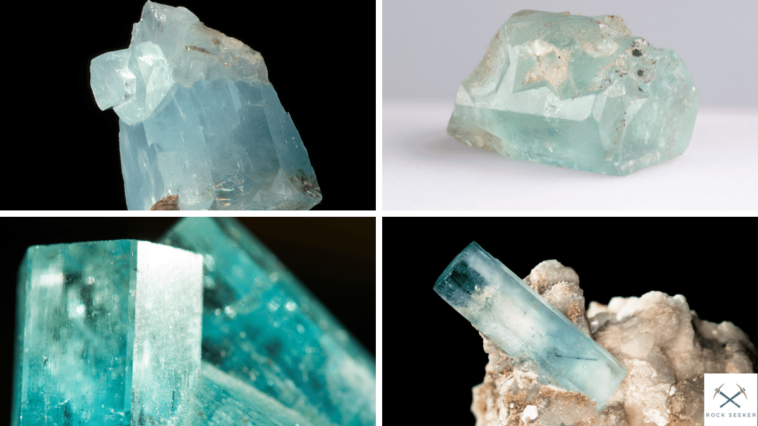Aquamarine is famous among gem enthusiasts. It’s a hard gemstone with a sky blue color, often known for high clarity. It’s found in many places, in forms of varying quality, but it’s highly sought after by many rockhounds. The gem itself is worth enough that there have been many tall tales told about locations and prospectors who jealously guard their location.
So, let’s learn about this incredible gemstone in our ultimate guide to aquamarine.
What is Aquamarine?
Aquamarine is a form of beryl, the same family of gemstones as emerald and heliodor. Its light blue color defines it. Most gemmy samples have very high clarity compared to others in the same family.
Aquamarine is most frequently seen as a faceted stone. Like all stones, its value is based on the 4 Cs.
- Color- The most important factor for aquamarine’s value. Most commercial grade material is lightly colored, but in fine jewelry, you’ll find much deeper colors. The best is a deep, saturated blue but there are plenty of sky blue pieces of aquamarine set in gold.
- Clarity- Clarity is usually high in aquamarine, unlike emerald. Clarity is important for the value of the stone, but some people purposefully use stones with interesting inclusions.
- Cut- Stones with a more difficult cut are worth more, it’s just how things work. The bottom end of the scale is the normal round cut, at the upper end we have strange fantasy cuts worth an absurd amount.
- Carat Weight- Weight is always a factor when selling gemstones since it lets us accurately measure which is the larger stone.
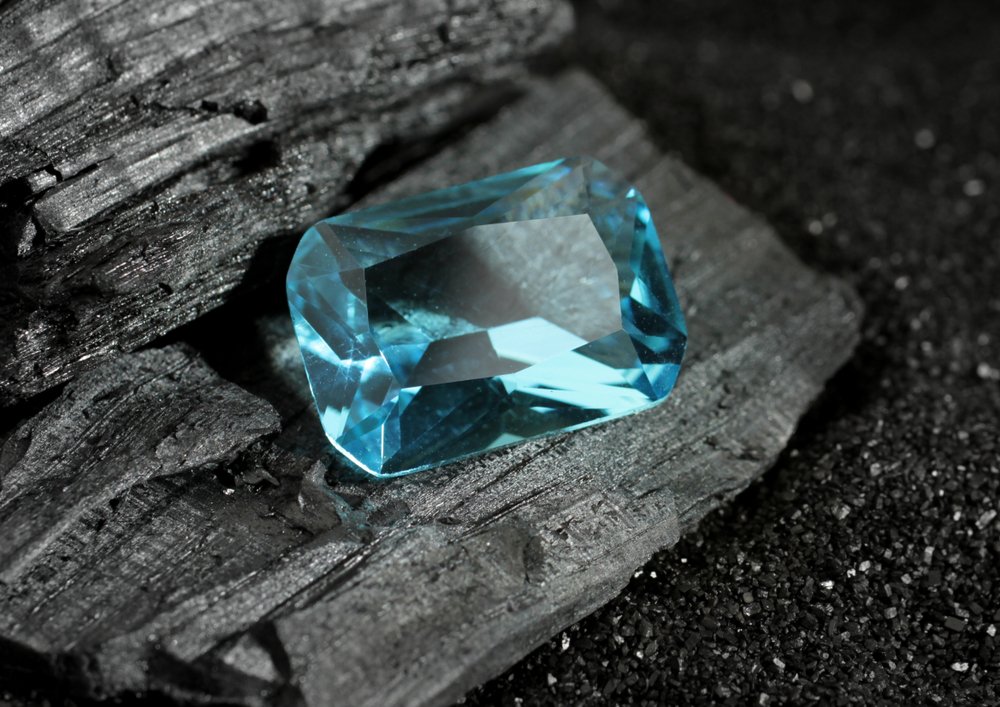
The same thing, minus cut, applies to general samples of the material. The material used to cut the best aquamarine is still very expensive before it’s ever cut.
The coloring agent in aquamarine appears to be iron molecules. These ions get trapped in the crystal lattice and depending on how things progress from there you’ll end up with either heliodor or aquamarine after a few million years.
Aquamarine appears in a hexagonal crystal system. It’s very distinctive and the hardness of the stone means that it often makes it through the ages intact. These samples are highly sought after, whether they’re highly included or gem-grade spikes of blue crystal.
These crystals can be enormous, but they are rarely found terminated.
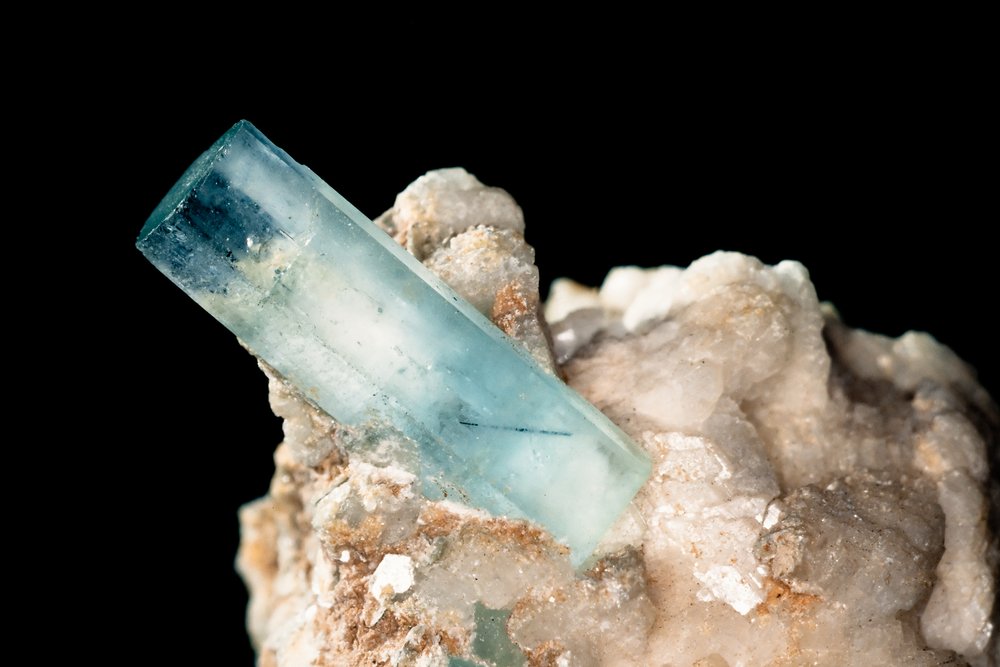
In truth, not all blue beryl is actually aquamarine. There is also sapphire blue beryl which is usually known as maxixe. The material looks great, but it has a flaw that makes it unsuitable for a lot of decorative uses.
Aquamarine fades in sunlight.
This color instability is caused by the unique coloring agent. Maxixe is actually NO₃, which degrades rapidly when exposed to sunlight and leaves behind colorless beryl.
Beryl, in general, has a hardness of 8.0 on the Moh’s scale and is quite brittle. The luster is considered vitreous or resinous. It’s an interesting stone in its own right, but aquamarine is one of the best examples of the family.
Oddly enough, emerald and aquamarine are the most well-known beryl gemstones but have different crystal formations. Even world-class emeralds often have inclusions that appear to the naked eye, while aquamarine is actually known for its clarity.
It’s just another example of how strange the formation of crystals can be.
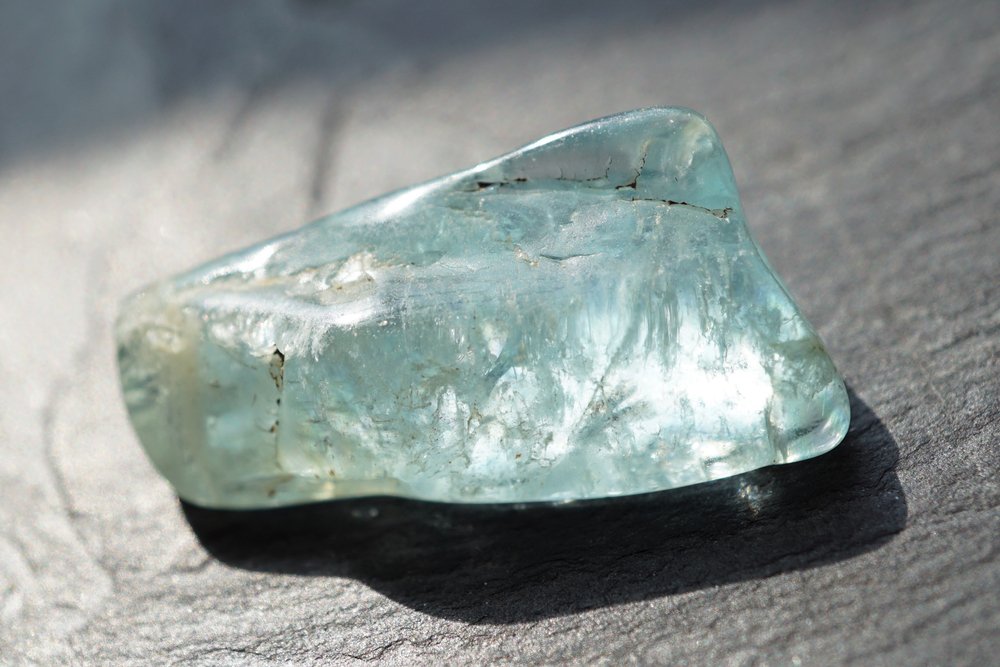
Where is Aquamarine Found?
Aquamarine is mined commercially in many parts of the world. It’s high cost also makes it something that rock hounds seek out, but the best locations are often hidden from public sight or already claimed in private.
Aquamarine is produced in many countries around the world. China, Brazil, India, and Myanmar all have gem-quality aquamarine for instance. Myanmar is known for producing fine, deep-blue samples of aquamarine but location is no guarantee of quality.
In the United States aquamarine can be found in the following locales:
- The Mojave in California
- Idaho
- Central Texas
- Georgia
- Tennessee
- Southern Maine
- Northern New York
Among others. The most famous location is in Idaho.
Being more specific with locations is hard. Aquamarine in the United States is often gem quality, unlike things like ruby, so the locations are hotly contested. You’ll have to do some footwork, and you may be out of luck if you’re not a local affiliated with a rock and mineral club.
Southern California’s pegmatites are the surest bet, but that involves hard rock mining in the Mojave desert.
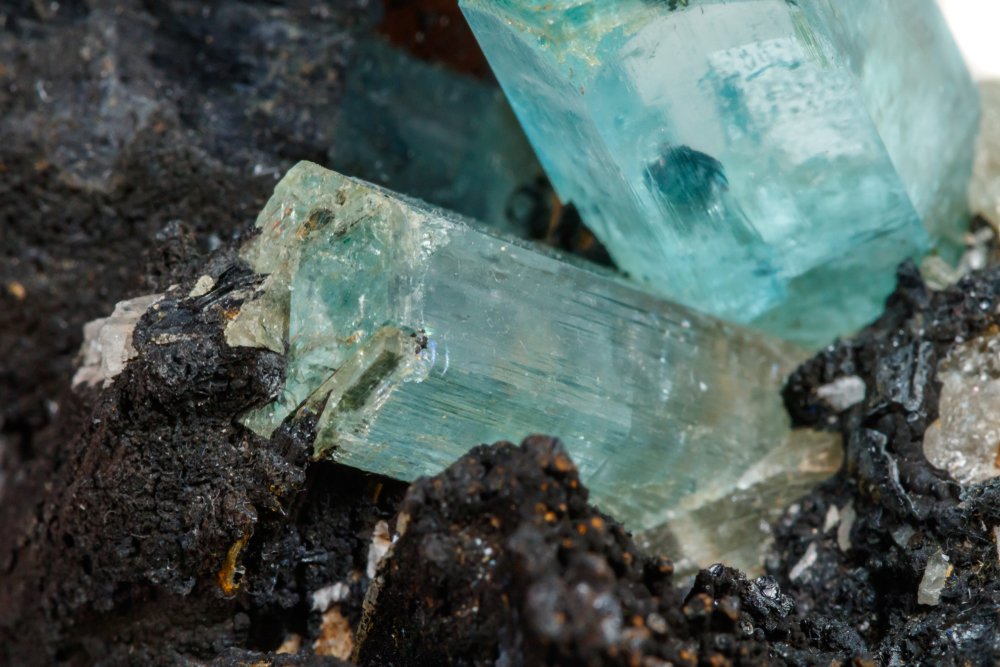
How Do I Dig Aquamarine?
There are two main locations where aquamarine is found.
The first is the most common: pegmatites.
A pegmatite is easy to describe. They’re a rock formation that consists of larger mineral samples, making them extremely coarse-grained. Think of a piece of granite and imagine the various minerals seen were 1-6” long and you’re on the right track.
Digging pegmatites is hard work, so it’s often a good idea to check through any debris nearby. In locations where other people have been mining things can be missed.
You’ll want the following:
- Rock Pick– For breaking smaller chunks and prying at things.
- Pickaxe– To knock off chunks of pegmatite.
- Pry Bar– For bigger prying applications that the rock pick can’t handle.
- Shovel– For moving broken down pieces out of the way.
- Chisel– For breaking into medium-sized pieces and knocking stone away from larger crystals.
All of the linked tools are those I’ve personally used. I stick with Estwing for my rockhounding gear, for the most part. They’re expensive but you’ll never have to buy the tool again. Cheaper tools are fine, especially if you’re not in the field often.
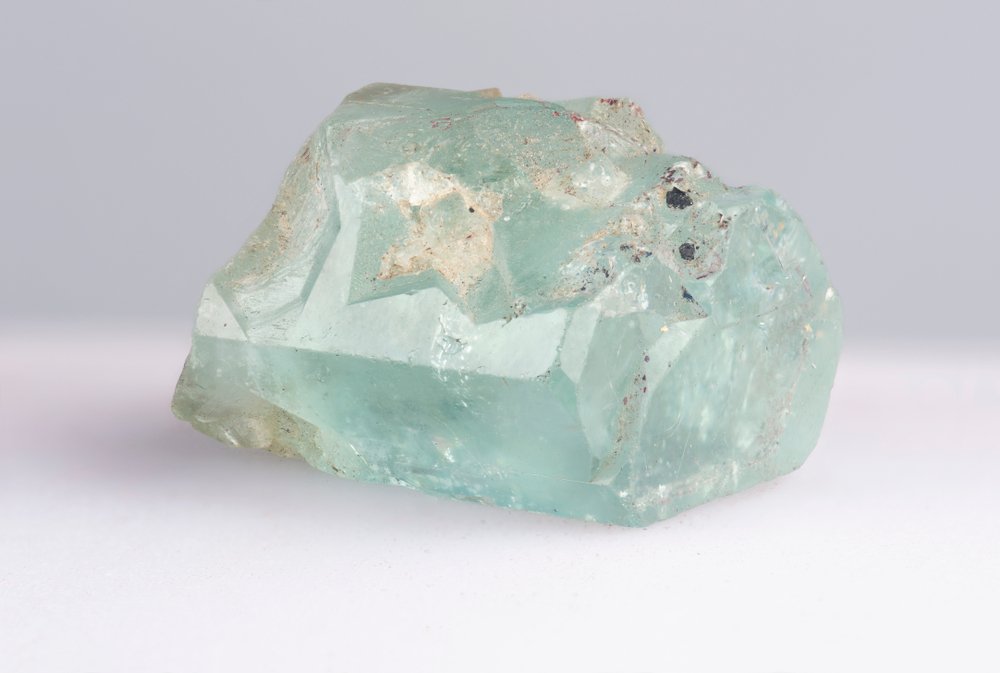
Since pegmatites are hard rock digging you need to make doubly sure that you have legal permission to dig where you are. It’s a lot easier on private property with permission from the land owner, as each state and National Park has their own set of rules when it comes to mining.
Pegmatites form quickly after an eruption. Pegmatite is known for housing high-quality crystals that formed quickly. Most locations that have pegmatite will also have other crystals encased in the stone. It’s cool stuff!
Veins are similar, but they’ll be present in metamorphic rock instead. Aquamarine has the variety to form in many environments, which is why it’s spread across the world. Metamorphic rock is usually easier to dig, so you’ll be able to recover the crystals faster.
Try not to fall afoul of any laws during your search. Aquamarine claims are actively guarded and you don’t want to stumble onto land that you’re not supposed to be on. Always get a good overview of who owns which bit of ground when you’re out looking.
It’s sweat, not knowledge, that’s going to open the stones that contain aquamarine.
So, when are you planning on trying to dig some?
- Online rock and mineral club for collectors of all levels!
- Find community with like-minded rock and mineral enthusiasts.
- Monthly Giveaways!
- Free Access to Entire Digital Library of Products (current and future products)*

